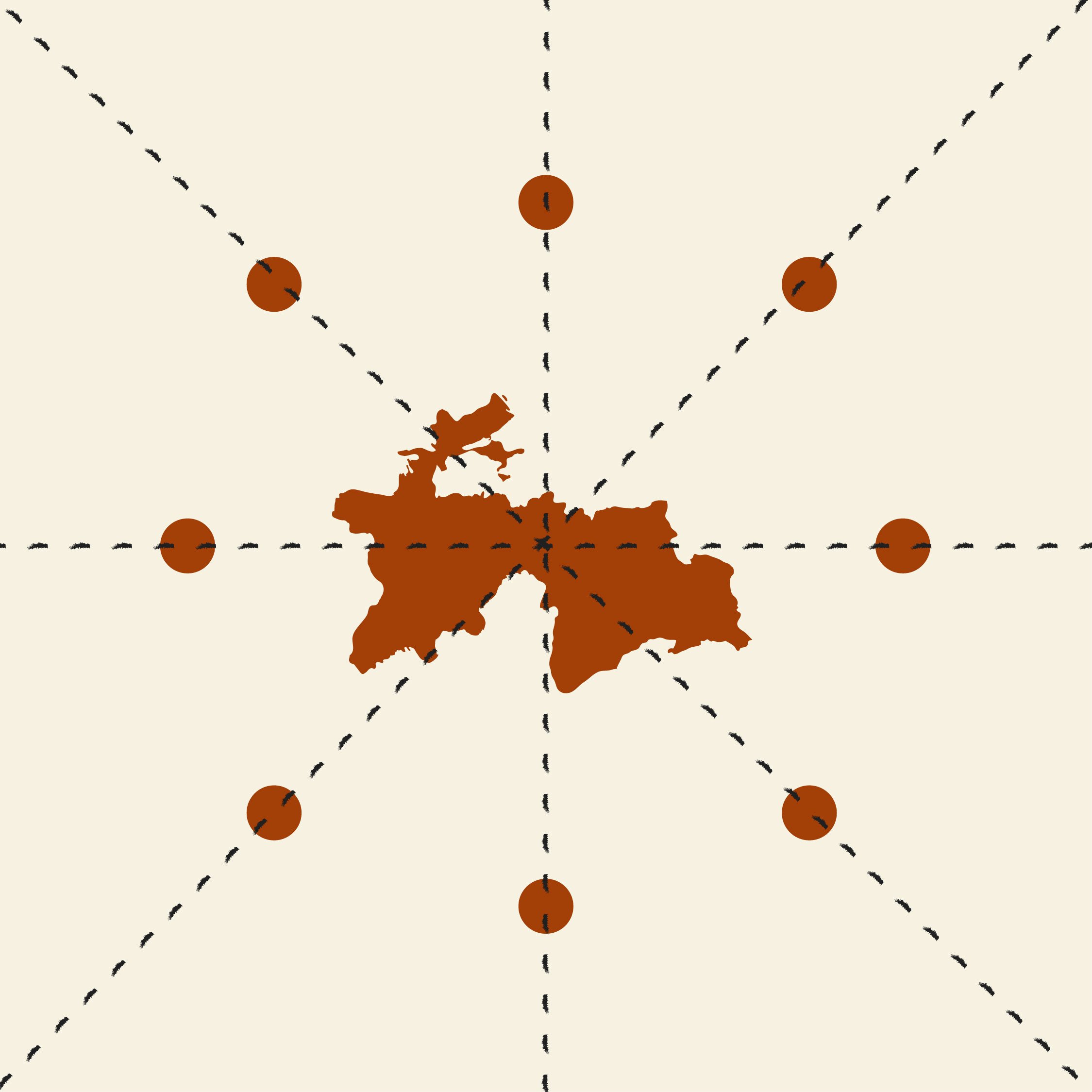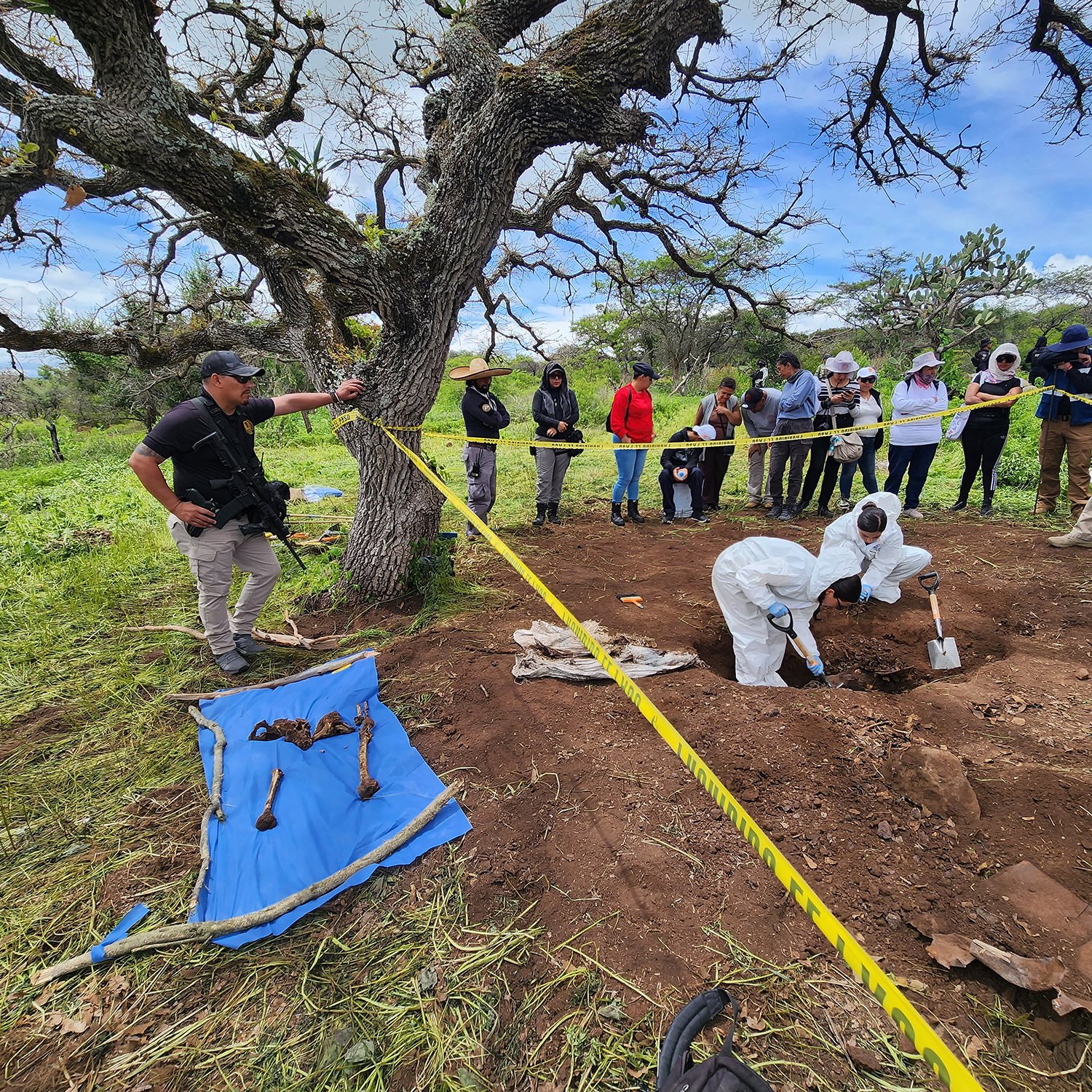The Three Pillars of the Enforced Disappearance
Over a hundred thousand citizens have vanished at the hands of the Syrian regime.
MARCH 5, 2024
More than 110,000 people were forcibly disappeared in Syria over the course of the last 13 years. What started in March 2011 as a peaceful revolution and part of the “Arab spring” turned into a civil war in 2012. The regime used extreme violence from the very beginning, and by 2013 the situation had turned into a chaotic situation, with many states (Israel, Iran, US, Russia and Turkey) as well as many non-state actors from neighboring and non-neighboring countries involved. Unlike what many in the world and even in the Middle East think, the Assad family regime that has been in power for 53 years is not just an oppressive dictatorship, it is also an exterminatory cliquish regime, with powerful genocidal tendencies. Enforced disappearance belongs to a family of exterminatory procedures, including mass torture and killings by torture, massacres (some by chemical weapons), rapes, forced displacement, siege and starvation, targeting civilian facilities, all met so far by impunity.
Enforced disappearances appear more and more to represent a novel Syrian reality: many Syrians were being kidnapped and disappeared at the hands of the Assad regime and Islamist groups.
The concept of enforced disappearance entered the Syrian conversation very late in the context of the Syrian revolution and war. It did so, fundamentally, as a legal rather than a political one. My aim in this short article is to politicize the concept.
✺
The Syrian Network for Human Rights, the most credible source about political and human rights violations in Syria, has published 12 annual reports on enforced disappearances. In the most recent one published in August 2023, the Network talked about 112.713 documented disappeared persons; in the preceding year’s report, they spoke about 111.907, approximately 85% of whom were disappeared by the Assad regime. Enforced disappearances appear more and more to represent a novel Syrian reality: many Syrians were being kidnapped and disappeared at the hands of the Assad regime and Islamist groups. In articles published between 2014 and 2016, the Syrian-Spanish writer and activist Yassin Swehat provided an authoritative comparative framework through which we can conceptualize our current significant experience with disappearance in Syria.
The concept of enforced disappearance was first born in Argentina to represent the experience of the disappearance of thousands of leftists fighting against brutal military rule between 1976 and 1983. The paradox is that the standard definition of enforced disappearance came from Argentine dictator Jorge Videla in response to a question about those disappeared by his regime: “We can’t carry out any special procedures [to reveal the fate of the forcibly disappeared] as long as they are disappeared. They are a question mark. They are not present. They have no identity. They do not exist. They are neither alive nor dead. They are just that, disappeared.”
Over the decades, disappearance has been adopted as a conceptual model to represent other similar experiences. Today, one can find research and papers on the concept of social disappearance: people who do not go missing because they were abducted, but who get lost, for example, in the Mexican desert while trying to reach the US border, or people who choose to live far from their friends and family in worlds of displaced people, or AIDS patients who spend their days with people like them in worlds invisible to the general public, or Romanian women who end up as sex workers in Spain after being lured by imagined love, or Syrians, Africans and others who drown in the Mediterranean Sea, which is turning more and more into a wasteland, a desert of water. (Regarding these forms of social disappearance, see the book edited by Estela Schindel and Gabriel Gatti).
Over the past 13 years, we have accumulated a vast array of experiences with disappearance. There is an increasingly urgent need for work on this topic that brings together rights-based, political and theoretical perspectives. The concept can function as the basic political metaphor of the Assad period of the Syrian history.
When we examine examples of people who have been forcibly disappeared, we can identify three elements, or pillars, of this experience: The first is incarceration — people confined in an unknown location. The second is unknown fate — whether these incarcerated people are alive or dead. And the third is silence or denial: the fact that either the families do not know which entity committed the disappearance, or the entity that they suspect of committing it denies doing so.
Dr. Mohammed Arab has been detained, cut off from the world, since being abducted by a regime patrol in Aleppo on November 2, 2011.
Abdulaziz al-Khayyir, Maher Tahan and Iyas Ayash have been confined in an unknown location, sometimes said to be Damascus International Airport, since they were abducted by the regime from Damascus International Airport in September 2012.
Dr. Rania al-Abbasi, her husband Abdulrahman Yasin, their daughters Najah, Intisar, Dima, Layan and Ala’, and their son Ahmad have been missing since regime intelligence forces took them on March 9, 2013. (Her oldest daughter was thirteen, and the youngest child was two.) With them was Dr. al-Abbasi’s assistant, Majdoleen Aqqad. (For more on the case of Dr. al-Abbasi and her family and assistant, see M. Hassan al-Abbasi’s account on Twitter).
Ali Mustafa has been detained in an unknown location since his disappearance at the hands of the regime on July 2, 2013. His daughter Wafa still counts the time of his absence in days (for more on Wafa and the story of her father, see here.)
Firas al-Haj Saleh and Dr. Ismail al-Hamed have been detained in unknown locations since they were kidnapped by ISIS in Raqqa on July 20, 2013, and November 2, 2013, respectively.
Jihad Asaad Muhammad was arrested on the street in Damascus on August 10, 2013, and it is unclear where he is being detained. Faiq al-Mir was taken, most likely from the street, and no one knows where he has been detained since his disappearance in October 2013.
My wife Samira al-Khalil, and our friends Razan Zeitouneh, her husband Wael Hamada, and Nadhem Hammadi (The Douma four) have been confined since their disappearance in Douma on December 9, 2013, and we do not know where. Have they spent all these years in one place, or several? Are all four in prison together, or were they split up amongst the many prisons run by Jaysh al-Islam, the Armed Salafi group that was the de facto power in Douma at that time.
The second and harshest pillar of enforced disappearance is the fact that their fate is unknown. We do not know if our loved ones are alive or have been killed. If the latter is true, then when, how and where? Where are their bodies?
These examples are just the tip of the iceberg. All of them are characterized by unknowability of the location of incarceration, and the long and protracted time of disappearance. They are also all from the first three years after the revolution. The aforementioned Syrian Network for Human Rights says that most enforced disappearances occurred in the first four years after the revolution. These disappearances have greatly affected the democratic and inclusive promises of the revolution and derailed the country into a multifrontal civil and regional war. The most recent disappearance among these examples has lasted for 10 years and three months. The oldest example, that of Dr. Muhammad Arab, is almost 12 and a half years. This time range gives an idea of the intensity and radical nature of the violence experienced by society during the Syrian Revolution, first at the hands of the regime, then at the hands of various Islamist groups.
The second and harshest pillar of enforced disappearance is the fact that their fate is unknown. We do not know if our loved ones are alive or have been killed. If the latter is true, then when, how and where? Where are their bodies? Their fate is a big question mark, to use Videla’s words. Unknown fate is the essence of enforced disappearance, the core that may never be discovered. To this day, the fate of most of those who were disappeared between 1978 and 1983 in Argentina, estimated to be about 15,000 people, is still not known.
However, it is only we, their loved ones and comrades, who do not know the fate of the disappeared. The dictators and those who aid and abet disappearances — Videla and his ilk, Bashar al-Assad, Samir Kaakeh of Jaish al-Islam, Ahmad Hussein al-Shar’a (al-Julani) of Hay’at Tahrir as-Sham (HTS, an offshoot of al-Qaida) and the ISIS security personnel — are not so ignorant. Disappearance leaves a special mark on the lives of those of us who do not know. Life is suspended or deferred while waiting for the person or people who were disappeared. In virtually all cases, most of the disappeared person’s loved ones live as refugees scattered in many countries all over the world, exacerbating this condition of suspended life. Our loved ones are disappeared in what is itself sort of a disappeared country. For long years, families’ efforts to uncover the fate of their disappeared relatives has been met with complete silence. This silence can be a measure of how powerful the effort is to keep what we do not know unknowable.
In some cases, the families’ efforts have been met not with silence, but with denial. Jaysh al-Islam took this approach regarding Samira, Razan, Wael and Nadhem. With denial, we have arrived at the third pillar of forced disappearance. We can distinguish two forms of this pillar based on the Syrian experience. The first is a partial form of denial that combines incarceration and unknowability of fate, as is the case for most Islamists arrested by the regime in the 1980s. Their families knew nothing about the fate of their confined members, some of whom spent twenty years in prison before coming back, suddenly, to their former life. But the families knew with full certainty that they had been taken by the regime. This applies to many of today's revolution prisoners, whose families know that they were taken by regime forces — but they still do not know anything about their fate. Then there is what can be called total disappearance in which the perpetrators deny responsibility for the crime of enforced disappearance. This is the case for the disappearances of Samira, Razan, Wael and Nadhem, as well as for most disappearances committed by Islamists.
With these three pillars — prolonged confinement, unknown fate, and silence or denial — disappearance possesses an exterminationist effect in that it cuts off all trace, completely extinguishing the disappeared person, as if they never existed at all.
The beginning of a disappearance differs: Islamists abduct people from the street or raid homes wearing masks to make sure no one will know them. This makes it easier for abductors to deny responsibility, and it seems to emanate from a profound sense of illegitimacy. It is well-known that neither ISIS, nor Jaysh al-Islam, nor Jabhat al-Nusra (HTS since (2017, have claimed that they commit abductions or disappearances to achieve justice. With the regime, disappearance usually starts with intelligence patrol officers taking the person or people from their home, usually at night, or from their workplace during the day, or at one of the ubiquitous checkpoints, or in an ambush at any time. What should we call this beginning? In the security forces’ paperwork, the regime uses the word arrest. But it’s not even detention. There has never been an arrest warrant from a judicial or security entity. If you ask about the entity that laid its hands on the unlucky victim, your questions may or may not be answered. There are tens of thousands of people held by the regime whose fate is unknown. Meanwhile, the families have not been able to find any information about their children (and this is the basis of an information trade that has earned the regime and its brokers 800 million US dollars according to a study published in 2020). Yassin Swehat called this the black market of enforced disappearance. Ultimately, they can be considered kidnappings rather than arrests or detentions — an operation to hunt down humans and make them disappear, which remains true even when the families are certain that their disappeared relative is being held by regime forces. The longer the disappearance lasts, as with all the examples mentioned above, the more the difference between the two forms of disappearance, partial and complete, becomes an insignificant formality.
With these three pillars — prolonged confinement, unknown fate, and silence or denial — disappearance possesses an exterminationist effect in that it cuts off all trace, completely extinguishing the disappeared person, as if they never existed at all. Enforced disappearances are part of a social extermination that translates and intensifies the political extermination (politicide) we knew so well before the revolution. Wherever in Syria the Islamists came to power — and they became de facto powers here and there beginning in 2013 — they demonstrated exterminationist potential, matching that of the regime even if it was limited in its means and capabilities.
In both cases, enforced disappearance, whose pillars are described above, is a continuation of the protracted political disappearance of the Syrians away from their shared interests. In other words, it is the most extreme example of the paradigm of political disappearance, within which the Islamists are only another variety. The Syrian revolution was a form of political appearance for millions of Syrians. It was defeated when the rallying people were thrown back into invisibility and obscurity. Disappearance has been the purest form of obscurity. It is obscurity itself.



